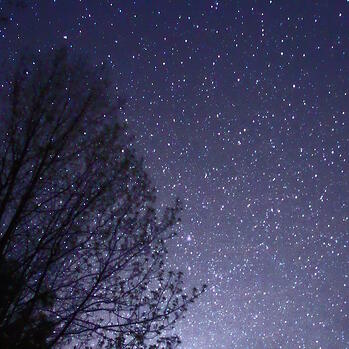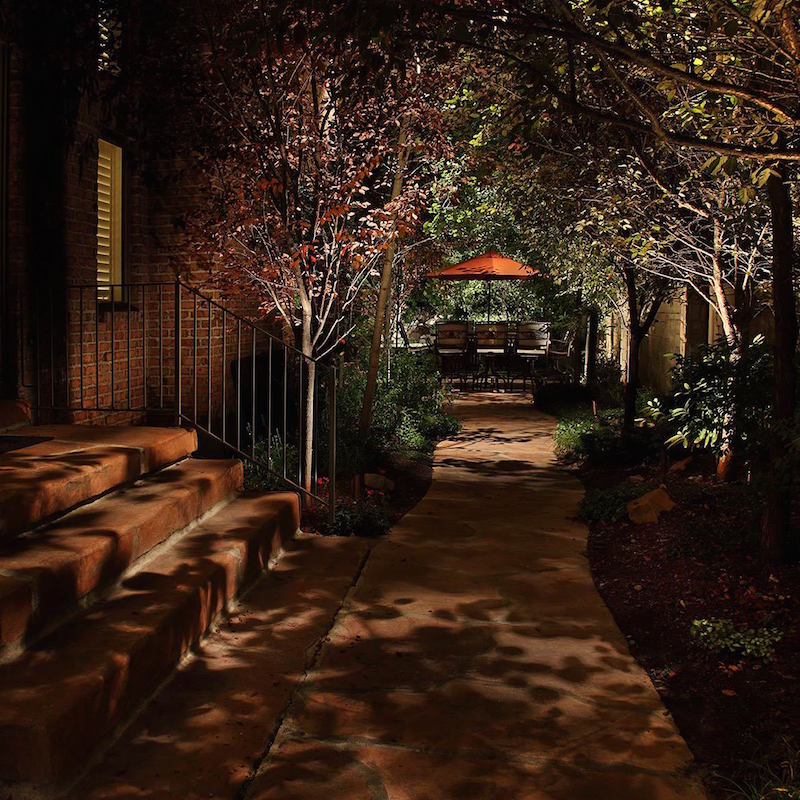How bright should landscape lighting be?
One scenario that plays out over and over again when I talk to clients is this: one spouse is all for the idea of outdoor landscape lighting, excited about how classy and tasteful it will be.
However, the other one is afraid their home will stand out like the lights on the Las Vegas strip — without the free buffet coupon and the Barry Manilow concert.

“Do we really need this many fixtures?” they ask. “It’s too much light!”
I hear this time and time again. And it’s a valid concern.
Light pollution is a big issue. Nobody wants to harm our beautiful night sky.
But it’s possible to beautifully light your home and landscape without contributing to the problem of light pollution.
What is light pollution?
Light pollution is basically unwanted light, or light that is misdirected or misused. It is light that shines where it shouldn’t.
It comes in three main types:
1. Light trespass
This is unwanted light shining where it doesn’t belong and isn’t needed. (i.e. light from your neighbor’s yard shining into your bedroom window.)
2. Glare
This is light so unnecessarily bright that it creates a nuisance or hazard.
3. Skyglow
This is light wastefully escaping into the night sky and causing a glow over urban and suburban areas. Stargazers hate it — it makes it difficult to see stars and galaxies, even with a telescope.
How bright should landscape lighting be?
The trick is to light very deliberately — including targeted downlighting — instead of just spraying light everywhere.
Each light has a purpose.
And it doesn’t have to pump out a lot of wattage to make an impact. Less really is often more.
It’s all about where you place the fixtures, their angle, the color, and the temperature of the light. The idea is to light with a scalpel, not a shotgun.
How to reduce light pollution:

You may not be able to single-handedly stop light pollution, but there are a lot of things you can do in your landscape to reduce light pollution.
Here are a few suggestions:
Warm it up
Use LED landscape lighting, with bulbs that produce warm white lighting.
Watch your wattage
Select a bulb type and wattage that provide the amount of light needed, with no excess.
Higher wattage doesn’t always mean better light. Low-wattage bulbs are often enough — and create a more beautiful aesthetic.
Aim fixtures in the right directions
Choose fixtures that direct light where it needs to go.
Fixtures come in a wide array of light distributions, so there are plenty of options.
Shield the glare
Use glare shields and “eyelids” to direct light where it’s supposed to go. These solid caps above the bulbs concentrate light where you want it.
The bottom line? You can light your landscape both beautifully and responsibly if you pay attention to the details.
Want to know more?
Give us a call at (801) 440-7647 to schedule a free consultation, or fill out our simple contact form.
Located in Sandy, Landscape Lighting Pro of Utah serves customers throughout Utah’s residential areas, including Salt Lake City, Park City, Draper, and Holladay. Our outdoor lighting portfolio includes projects from Salt Lake County and Utah County, to Davis County and Summit County — and beyond.
Salt Lake City (Midvale)
801-440-7647
St. George
435-932-6627
©2024 Landscape Lighting Pro